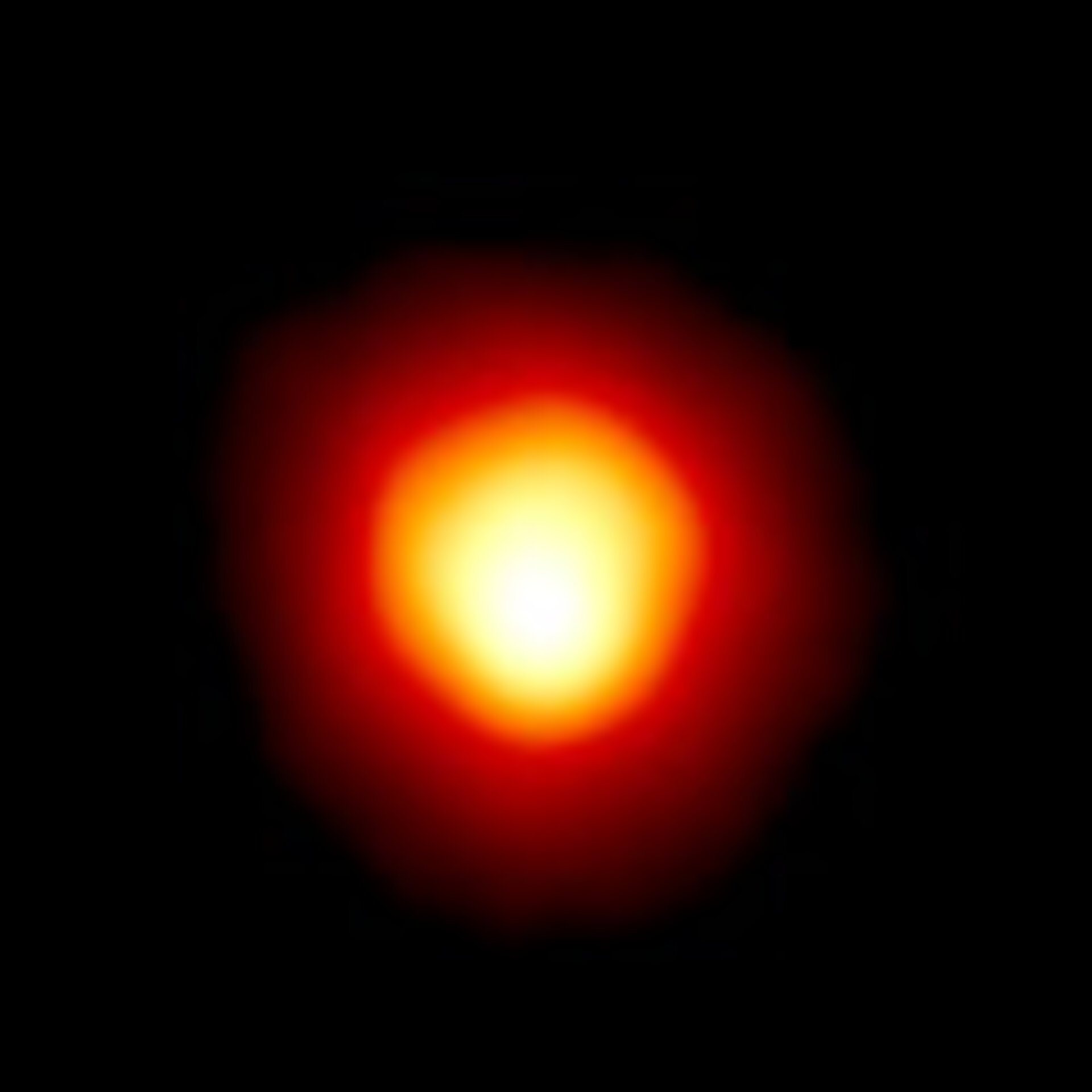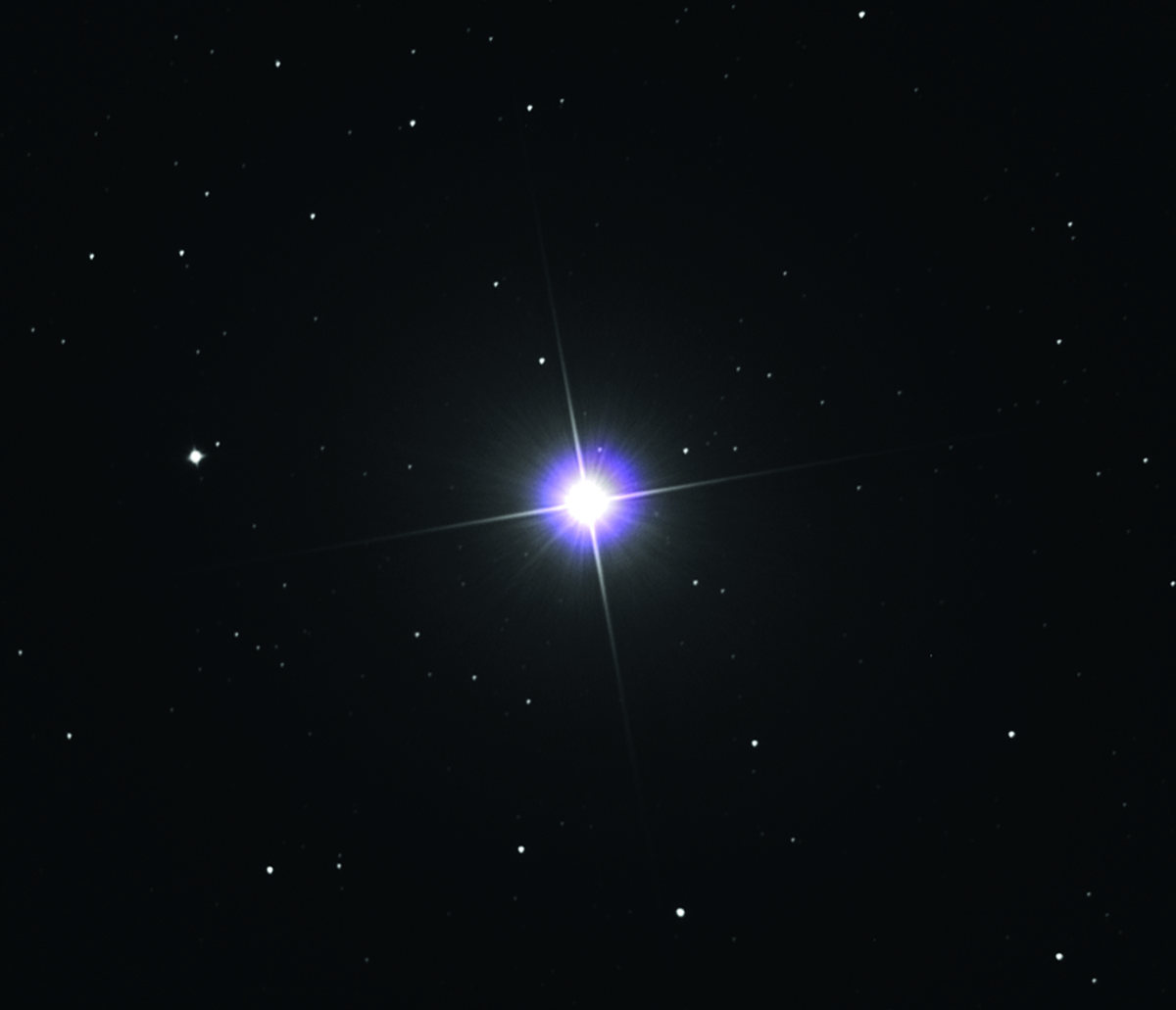*This post may contain affiliate links. This means we may make a commission if you purchase an item using one of our links*
Betelgeuse and Rigel are two of the brightest stars in the night sky and the most luminous celestial bodies in the constellation Orion. Still, there are key differences; Betelgeuse is a red supergiant, and Rigel is a blue-white supergiant. Betelgeuse is physically larger, but Rigel is more massive and hotter.
Continue reading to explore the similarities and differences between these two colossal stars. Learn how to tell them apart in the night sky and what will happen when they reach the end of their lives.
What Is Betelgeuse?
Table of Contents

Betelgeuse, or Alpha Orionis, is the second brightest star in the Orion constellation and among the most luminous objects in the night sky. This luminosity and its deep red hue make it one of the easiest stars to spot and identify.
The star is a red supergiant (M1-M2 Ia-ab), meaning it has exhausted the hydrogen fuel supply within its core and resorted to conducting nuclear fusion in outer shells, which expand and create one of the largest known stars in the Universe.
Located approximately 724 light-years from Earth (per Gaia DR3 data), Betelgeuse possesses a radius of approximately 764 times that of the Sun and 16.5-19 times its mass. It has a luminosity of about 90,000-126,000 times that of our Sun (with post-dimming estimates at the lower end of this range), despite being significantly cooler than our central star.
The surface temperature of Betelgeuse averages 3,500 K (approximately 3,227°C). It is also far younger than our Sun, with an estimated age of just 8-8.5 million years.
Its variable nature means the observed light can vary in intensity. The “Great Dimming” of 2019-2020 saw its apparent magnitude drop from approximately 0.5 to 1.6 before returning to normal brightness. This fluctuation was caused by a massive surface ejection of gas that condensed into dust as it cooled, as confirmed by Hubble observations.
The name Betelgeuse derives from the Arabic “yad al-jawzā” meaning “the hand of Orion.” Thanks to its colossal size and advanced evolutionary state, Betelgeuse will likely end its life in a Type II supernova within the next 100,000 years, leaving behind a neutron star.
What Is Rigel?

Rigel, or Beta Orionis, is a blue-white supergiant star (B8 Ia) and the brightest celestial body in the Orion constellation. Though located about 863 light-years from Earth, Rigel is the seventh brightest star in our entire night sky with an apparent magnitude of 0.12.
Although Rigel is classed as the beta star, it’s actually brighter than Betelgeuse in apparent magnitude. The historical classification may reflect periods when Betelgeuse, as a variable star, outshone Rigel.
Its name derives from the Arabic “rijl jauzah al yusrā” meaning “the left foot of the central one.” This massive star appears as a single celestial body but is actually the primary component of a quadruple star system.
Current estimates place Rigel at about 78.9 ± 7.4 solar radii, with approximately 120,000 times the Sun’s luminosity. Rigel’s surface temperature averages around 12,100 K (approximately 11,827°C) – far hotter than both Betelgeuse and our Sun.
Blue supergiants like Rigel originate from stars born massive (10-100 times solar mass). These stars maintain furious fusion rates in their cores, but when they exhaust hydrogen, they continue burning heavier elements like helium, causing them to burn hotter and brighter.
This brilliant luminosity comes at a cost – Rigel experiences powerful stellar winds, losing mass at a rate of approximately 3 × 10⁻⁷ solar masses per year (millions of times greater than our Sun’s solar wind). Rigel will likely end its life in a spectacular supernova that could collapse directly into a black hole due to its mass of approximately 21 solar masses.
Similarities Between Betelgeuse And Rigel
-
Both stars belong to the constellation Orion and dominate its appearance
-
Both are evolved supergiant stars that have exhausted hydrogen in their cores
-
Both are in the final stages of stellar evolution with ages of approximately 8 million years
-
Both will end their lives in spectacular supernova explosions
-
Both are vastly more luminous than our Sun (90,000-120,000 times solar luminosity)
-
Both are visible to the naked eye and have been observed since antiquity
-
Both are variable stars (Betelgeuse is a semiregular variable, Rigel is an Alpha Cygni variable)
Differences Between Betelgeuse And Rigel
-
Betelgeuse is a red supergiant (M1-M2 Ia-ab) while Rigel is a blue-white supergiant (B8 Ia)
-
Rigel has a higher surface temperature (12,100 K vs 3,500 K)
-
Betelgeuse has a much larger physical size (764 solar radii vs 79 solar radii)
-
Rigel is more massive (21 solar masses vs 16.5-19 solar masses)
-
Betelgeuse is closer to Earth (724 light-years vs 863 light-years)
-
Rigel is part of a quadruple star system, while Betelgeuse appears solitary
-
Their fates differ: Betelgeuse will likely form a neutron star, while Rigel may form a black hole
-
Betelgeuse is more evolved and closer to supernova
Summary
Betelgeuse and Rigel represent two contrasting paths of stellar evolution. Betelgeuse, the red supergiant, has expanded to enormous size as it nears the end of its life, while Rigel, the blue supergiant, maintains its fierce luminosity through extreme temperatures. Though both will meet spectacular ends as supernovae, their different masses dictate different remnants – Betelgeuse will likely form a neutron star, while Rigel may collapse directly into a black hole. Together, they create the striking visual contrast that makes Orion one of the most recognizable constellations in our night sky.
References
-
Joyce et al. (2020). “Standing on the Shoulders of Giants: New Mass and Distance Estimates for Betelgeuse” – The Astrophysical Journal
-
Harper, Brown & Guinan (2008). “A New VLA-HIPPARCOS Distance to Betelgeuse” – The Astronomical Journal
-
Moravveji et al. (2012). “Asteroseismology of the nearby SN-II Progenitor: Rigel” – The Astrophysical Journal
-
Montargès et al. (2021). “A dusty veil shading Betelgeuse during its Great Dimming” – Nature
-
Przybilla et al. (2006). “Quantitative spectroscopy of BA-type supergiants” – Astronomy & Astrophysics
-
SIMBAD Astronomical Database – Betelgeuse and Rigel entries
-
Gaia Data Release 3 – Distance measurements

